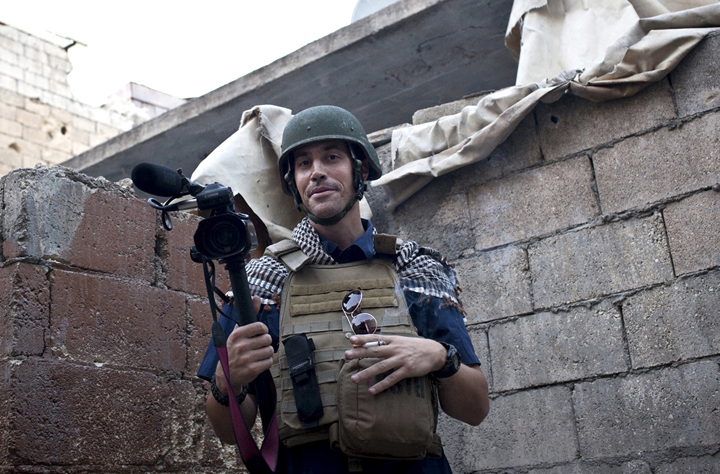TORONTO – A video depicting the beheading of U.S. journalist James Foley has caused widespread backlash on social media, as users call on each other not to spread the graphic images released by the Islamic State of Iraq and Greater Syria (ISIS).

The hashtag #ISISMediaBlackout began trending shortly after the video was released Tuesday.
READ MORE: ISIS claims to kill U.S. journalist James Foley, posts video online
People urged media outlets and fellow users not to share the video showing Foley’s execution or any other graphic images released by the militant group, in an effort to stop the spread of ISIS’ propaganda.
Foley’s murder appears to be in response to U.S. President Barack Obama’s authorization of targeted airstrikes against ISIS, which now refers to itself as the Islamic State or IS. Two U.S. officials have said they believe Foley was the victim in the video.
Foley went missing in Syria on Nov. 22, 2012.
The #ISISMediaBlackout hashtag garnered more than 3,800 tweets in less than two hours, according to social analytics firm Topsy. Users continue to spread the message of “No retweets for terrorism” on Wednesday.
“Amputate their reach. Pour water on their flame,” wrote Twitter user @LibyaLiberty, who claims to have started the hashtag Tuesday evening.
“From here on out, I won’t share any photo or video of violence intentionally recorded and released by ISIS for propaganda.”
Twitter CEO Dick Costolo said in a tweet his company “is actively suspending accounts as we discover them related to this graphic imagery.” Twitter has also been actively suspending accounts that appear to be associated with ISIS due to threatening language.
According to Twitter’s rules, users may not “publish or post direct, specific threats of violence,” however the social network relies on users to report inappropriate or violent images.
READ MORE: Twitter tries to block images of Foley killing
But despite these efforts, images of Foley’s execution continue to make the rounds online.
As of Wednesday morning, tweets could still be found linking directly to the footage on some video sharing sites, such as Vimeo. Vimeo has not yet responded to request for comment.
But there are some that believe the campaign isn’t the right way to go about dealing with Foley’s death and ISIS’ actions.




Comments